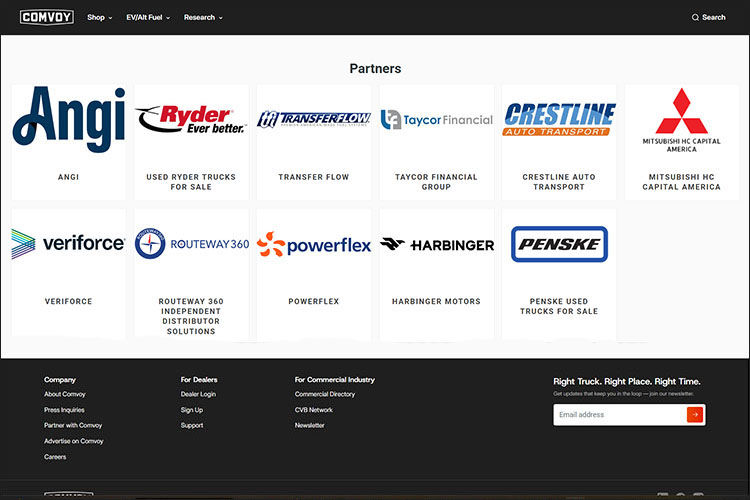Commercial EV Charging Infrastructure – Current State and Developments


Commercial EV Charging Infrastructure – Current State and Developments
The transition to electric vehicles (EV) is accelerating globally, fueled by advancements in battery technology, supportive governmental policies, and growing environmental awareness. One of the key factors affecting adoption rates (and range anxiety) is how quickly the charging infrastructure expands.
Charging stations are classified mainly into Level 2 chargers and DC Fast chargers, with the latter offering rapid charge times. Further specialized versions, like Tesla's Superchargers, offer proprietary charging solutions. The majority of these chargers are located in urban areas and major routes for public charging, although a growing number are installed privately at homes and workplaces. However, rural areas still face a shortage, signaling an opportunity for expansion.
Current State of Commercial EV Charging Infrastructure
Charging infrastructure is fundamental to EV adoption. According to usafacts.org, "There are currently more than 56,000 EV charging stations with about 148,000 charging ports across the country. While this is enough to sustain the current number of registered EVs, the US would need to roughly triple installations over the next eight years to support the anticipated number of EVs on the road by 2030."
The reliability of the charging stations, however, is an unfortunate question mark. According to a J.D. Powers report, “...20.8% of consumers still say they show up at a public charger that does not work. Similarly, overall customer satisfaction with Level 2 public charging—which represents 71% of all EV charging in America—continues to decline.”
SHOP ADVANCED FUEL VEHICLES NOW
And then there’s the Qmerit whitepaper revealing that the most common reasons for failed EV charging sessions are problems with:
- Station connectivity: 55 percent
- Internal station faults or errors: 38 percent
- Charging connector or cable: 4 percent
- Credit-card reader: 1 percent
- Display screen: 1 percent
“Mass consumers…don’t have range anxiety; they have charging anxiety.”
—Jim Farley, CEO, Ford
Even so, we must remember that, as with all emerging technology, infrastructure status is always on a spectrum. The good news is that we are seeing a lot of progress in the charging infrastructure space.
The federal government awarded nearly $150 million to repair or replace almost 4,500 existing EV charging ports, and approximately 1,100 new public, fast-charging stations opened in the United States during the second half of 2023. All good news for businesses considering whether to transition to commercial EVs for their operations.
Charging Station Solutions and Locator Maps
Several key players take center stage in the EV charging space, including;
- For Tesla owners (and those using Tesla adapters), the Tesla Supercharger network offers access to charging stations across the U.S. and Canada.
- ChargePoint boasts a vast network of charging stations across North America and has a ChargePoint Station Locator for public access, as well as options to install a charging station at your own location.
- Electrify America also has a charging station map for public access and options to install a charging station at your location.
- EVgo has made its mark in the U.S. market, establishing numerous charging stations for public access and options to install a charging station at your location.
- The Alternative Fueling Station Locator maintained by the US government is being featured by NuPropel as a way to keep an eye on all fuel options charging and fueling.
To simplify locating charging stations, various websites and apps have been developed.
Apps include;
- PlugShare is a user-generated database offering a comprehensive view of global EV charging stations. This mobile app is available for laptops, Apple, and Android.
- ChargeHub possesses an extensive filtering system, allowing users to find all the charging stations in North America. The ChargeHub app is available for laptops, Apple, and Android.
- Open Charge Map, a community-driven worldwide database, provides information about charging points. Open Charge Map is available for laptops, Apple and Android.
Challenges and Future Prospects
Charging infrastructure must grow in tandem with EV adoption. Challenges lie in standardizing charging interfaces to allow universally compatible stations and developing future-proof infrastructure. The adoption of Tesla-compatible chargers by various EV manufacturers highlights the growing consensus among industry stakeholders about the crucial need for a universal standard in EV charging.
According to a Business Insider article, "Starting in 2024, if you drive a non-Tesla EV (from the automakers that have announced they'll make the switch), you'll be able to charge at 12,000 Supercharger locations with an adapter. That's not all Superchargers — some (the original and V2 chargers) are not compatible with CCS, but the V3 chargers are. But by 2025, EVs from several automakers won't even need an adapter. Non-Tesla stations will increasingly incorporate NACS in addition to CCS."
The swift embrace of the Tesla-style charger by non-Tesla OEMs signals a watershed moment in the move toward the standardization of charging infrastructure. Standardization is instrumental in accelerating the large-scale adoption of EVs, as it tears down the barriers of proprietary charging systems, making it easier for drivers to locate and use charging stations irrespective of their vehicle make.
Governments have a significant role in encouraging infrastructure growth through incentives and mandates. Looking forward, emerging technologies, such as wireless EV charging or battery swapping, may also provide exciting opportunities in addition to traditional charging methods.
Conclusion
In conclusion, the commercial EV charging landscape is complex and dynamic, with continuous growth, innovation, and the emergence of new industry players. While challenges persist, particularly with regard to standardization and rural charging access, aggressive expansion plans, alongside technological advancements, paint an optimistic picture for the future of the commercial EV charging infrastructure.
SHOP ADVANCED FUEL VEHICLES NOW
Published on: March 05, 2024






